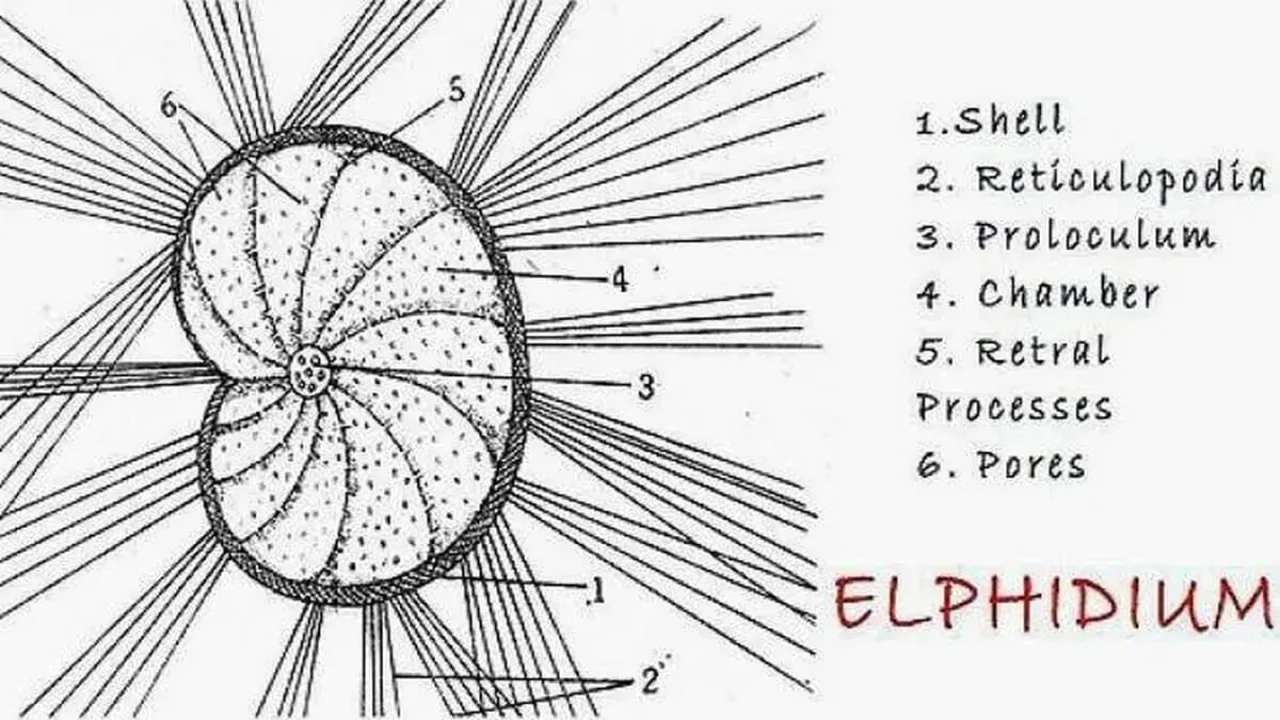Life History of Polystomella (Elphidium)
Life history of Polystomella shows alternation of generations (Sexual method of reproduction will alternate with asexual method of reproduction).

Life history of Polystomella shows alternation of generations (Sexual method of reproduction will alternate with asexual method of reproduction).
Elphidium-Asexual reproduction
In Elphidium microspheric form takes up asexual reproduction by multiple fission. The nuclei break into many Chromatin bits. They become round. They are covered by bits of cytoplasm. Several amoeboid cells are formed. These amoebulae are liberated into water. In the water these Amoebulae will develop shell. The first chamber is called 'Proloculum'.
This grows into megalospheric form. It contains only single nucleus. This takes up sexual reproduction.
Elphidium Sexual Reproduction:
Megalospheric form performs sexual reproduction, it has a single nucleus in its cytoplasm. It undergoes many divisions. The first division is reductional. Then gametes are formed. Each gamete shows two flagella. These are all similar. They are called isogametes. They show 3 to 4 microns length. These isogametes coming from two different parents will unite and a zygote is formed This union is called isogamy. This zygote will give rise to microspheric form. This form shows many nuclei in its cytoplasm. It takes up asexual reproduction.
Alternation of Generations:
In the lite history of Elphidium the microspheric form will undergo asexual reproduction and produce megalospheric forms. These forms will undergo sexual reproduction and produce microspheric forms. Thus in the life-history micro and megalospheric forms will alternate. This type of alternation of generations is called Metagenesis, because both alternating stages are diploid.
The information on this page is peer reviewed by a qualified editorial review board member. Learn more about us and our editorial process.
Last reviewed on .
Article history
- Latest version
Cite this page:
- Comment
- Posted by Dayyal Dungrela